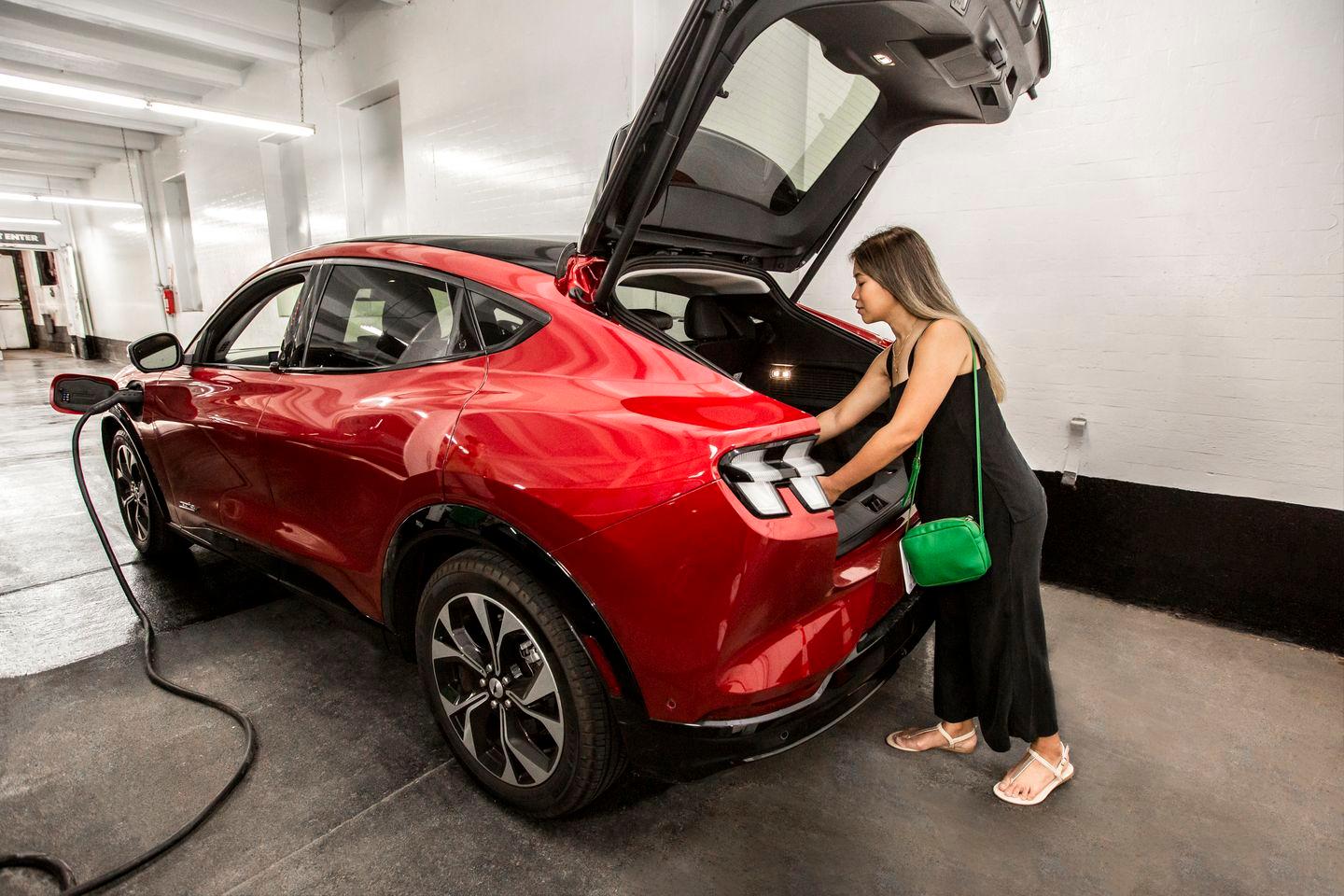Electric vehicle (EV) charging and parking go hand in hand. After all, you need to park your EV in order to charge it. This makes commercial parking garages ideal businesses for electric vehicle supply equipment (EVSE) installation.
Your customers are already there to park their vehicles, so why not offer charging services and generate some additional revenue in the process?
Meet the growing EV charging demand
While 80% of EV charging typically occurs at home, not every EV owner — or potential owner—has access to charging facilities at their residence. This underscores the importance of public EV chargers for those seeking alternative charging options.
By incorporating EV charging opportunities into your parking garage, you can attract new customers, enhance loyalty among existing EV-driving customers, and improve your occupancy rates. Since EVs require time to fully charge, providing charging infrastructure adds value to your services.
Moreover, offering EV charging facilities can help retain customers transitioning from internal combustion engine (ICE) vehicles to an EV. If they know they can reliably charge their vehicle at your parking garage, they are less likely to seek alternative locations. With an increasing number of customers expected to make the switch to EVs in the near future, investing in EV charging infrastructure presents a significant opportunity for customer retention and business growth.
Enhance convenience and accessibility
EV owners prioritize convenience, and for them, convenience equates to easy access to charging stations. By offering charging opportunities at your parking garage, you can establish your destination as a memorable and preferred choice among EV owners.
Best of all, if your competitors have yet to integrate EV charging into their parking facilities, installing chargers provides a simple way to distinguish your garages from the competition. On the other hand, if your competitors have already adopted EV chargers, it’s crucial to keep pace to avoid falling behind in meeting the evolving needs of customers.
Optimize space utilization
Utilizing space to its fullest potential is always appreciated, and installing EV charging infrastructure in a parking garage achieves just that. Blink EV chargers, along with their accompanying infrastructure such as duct work and wiring, occupy minimal space, particularly if you opt for wall-mount options where available. When vehicles are parked for extended periods, enhancing those parking spaces with EV charging simply makes sense, making them even more valuable and useful.
Generate additional revenue
While parking is undoubtedly the primary revenue source for parking garages, installing EV chargers and collecting fees for their usage introduces an additional revenue stream for your parking spots. Some parking managers opt to provide free energy to customers, who pay for parking, while others charge EV drivers for both parking and electricity.
Regardless of your chosen pricing model for EV chargers, offering this amenity can draw more customers to your business who may have otherwise chosen to park elsewhere. It not only diversifies your revenue streams but also enhances the appeal of your parking facilities, contributing to increased customer satisfaction and loyalty.
Promote sustainable practices
Many companies are seeking ways to enhance their environment friendliness, and providing EV charging for drivers is one of the simplest steps a parking garage can take in that direction. It serves as a clear and tangible indication that your company is dedicated to sustainability.
With Blink Charging, you can demonstrate your strong commitment to sustainability. When you install Blink chargers, they become part of the Blink Network. Being part of this network offers numerous benefits, including the ability to generate environmental reports linked to your chargers’ usage. Additionally, belonging to the Blink Network provides advantages such as:
Display your chargers in the Blink Charging Mobile App and other EV charging locator services, like PlugShare,
Generate usage reports for your chargers,
Set your own pricing model, whether it’s time-based, duration-based, or hybrid of both,
Implement pricing strategies for specific times throughout the day to leverage off-peak electricity rates, and
Create user groups and assign different pricing structures to each group.
What type of EVSE should you install in a parking garage?
The ideal EV charger for a parking management company is determined by the company’s specific goals. There exists a general guideline in EV charging that suggests the longer a vehicle is anticipated to remain parked, the more suitable it is for a Level 2 (L2) charger. In instances where vehicles will be parked for extended periods, such as in parking garages, L2 chargers like the Series 8 Commercial Level 2 EV Charging Station prove to be an excellent choice. These chargers operate on 208/240V electricity, making them the most convenient and cost-effective option for installation, particularly if your garage already possesses the necessary infrastructure. Furthermore, the plug-in hybrid and electric vehicles which cannot utilize DCFCs, can fully benefit from L2 chargers. Hence, Level 2 chargers are the dominant choice for businesses seeking EV charging solutions.
Another option for commercial EV charging are Direct Current Fast Chargers (DCFCs). Operating on 480V DC power and delivering 30-360 kW to battery electric vehicles, DC fast chargers are particularly suitable for parking facilities situated near highways, catering to fleet and long-distance travelers. Although DCFC can charge an EV in less than an hour, it’s important to consider that they entail higher installation costs compared to L2 chargers and may necessitate additional permitting.
Learn more about selecting the right charging level for your parking facility.
EVSE incentives and funding opportunities
While the initial investment for EVSE installation can indeed be significant, there exist numerous funding opportunities available for parking companies, at both the federal and state levels.

